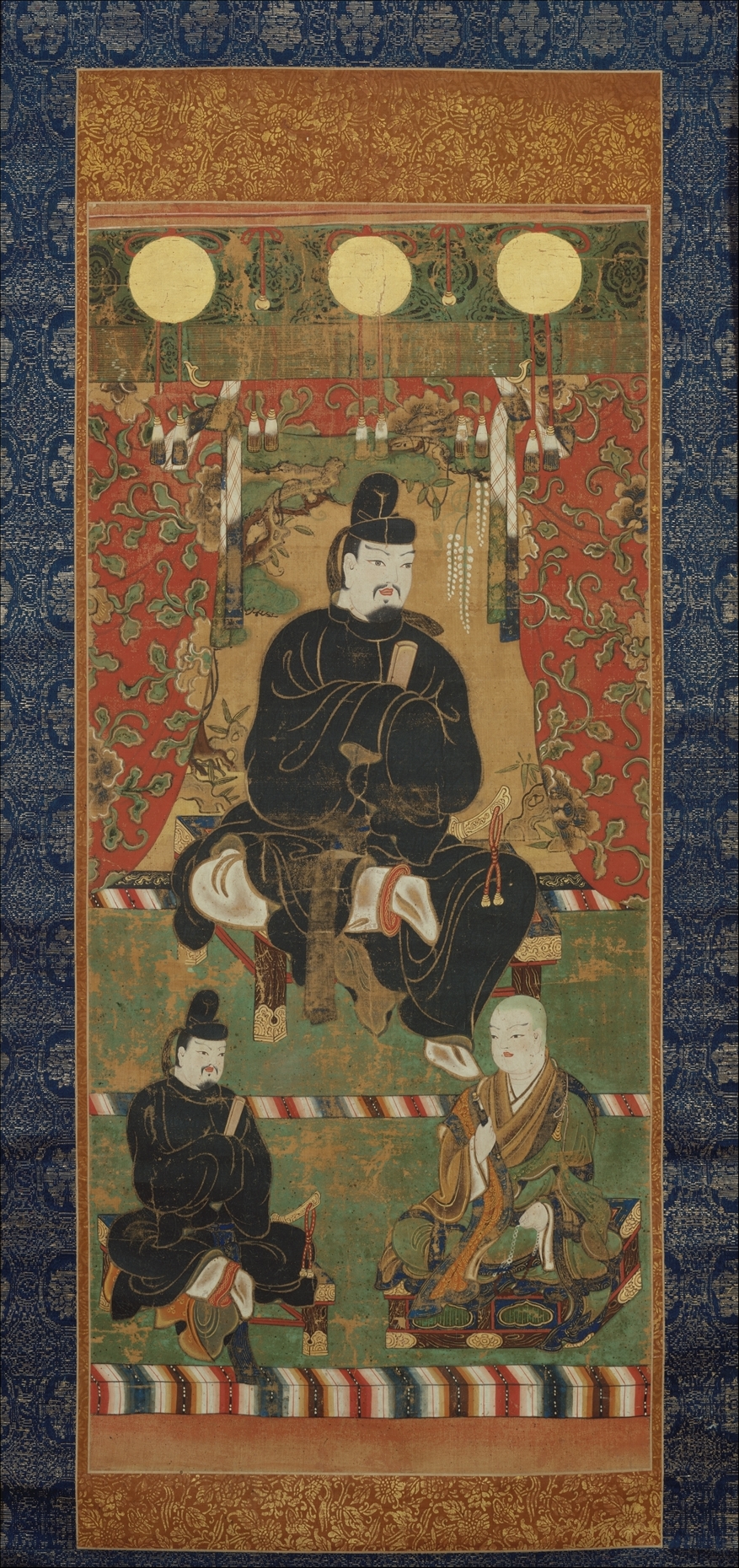Javascript must be enabled to continue!
Fujiwara no Kamatari as a Shinto Deity
View through The Met
Hanging scroll; color on silk, Nanbokuchō period (1336–92), Japan
Title: Fujiwara no Kamatari as a Shinto Deity
Description:
Hanging scroll; color on silk, Nanbokuchō period (1336–92), Japan.
Related Results
Watercolour of Shen Nung, Chinese deity of Medicine etc.
Watercolour of Shen Nung, Chinese deity of Medicine etc.
Shen Nung, Chinese deity of Medicine, Pharmacy and Agriculture. Copied from an old painting in Shanghai by a Chinese artist. The god is seated at the mouth of a cave, dressed in hi...
Shinto Deity as a Seated Courtier
Shinto Deity as a Seated Courtier
Wood; single-block (ichiboku-zukuri) construction with traces of red and black pigment, Heian period (794–1185), Japan...
Mike Saijo, Ancient Azalea (Shinto Text) (2018)
Mike Saijo, Ancient Azalea (Shinto Text) (2018)
Toner on book pages of Shinto text, 36 × 36 in...
Male and Female Shinto Deities
Male and Female Shinto Deities
Japanese cypress with traces of color, Heian period (ca. 900–1185), Japan...
Case (Inrō) with Design of Cherry Trees with a Shintō Shrine
Case (Inrō) with Design of Cherry Trees with a Shintō Shrine
Colored lacquer and gold silver blue and red togidashi on black lacquer, Edo period (1615–1868), Japan...
Chinese Couplet by Bai Juyi and Waka by Fujiwara no Toshiyuki (partial) from “Japanese and Chinese Poems to Sing” (Wakan rōeishū)
Chinese Couplet by Bai Juyi and Waka by Fujiwara no Toshiyuki (partial) from “Japanese and Chinese Poems to Sing” (Wakan rōeishū)
Handscroll section mounted as hanging scroll; ink on dyed and decorated paper, Momoyama period (1573–1615), Japan...




